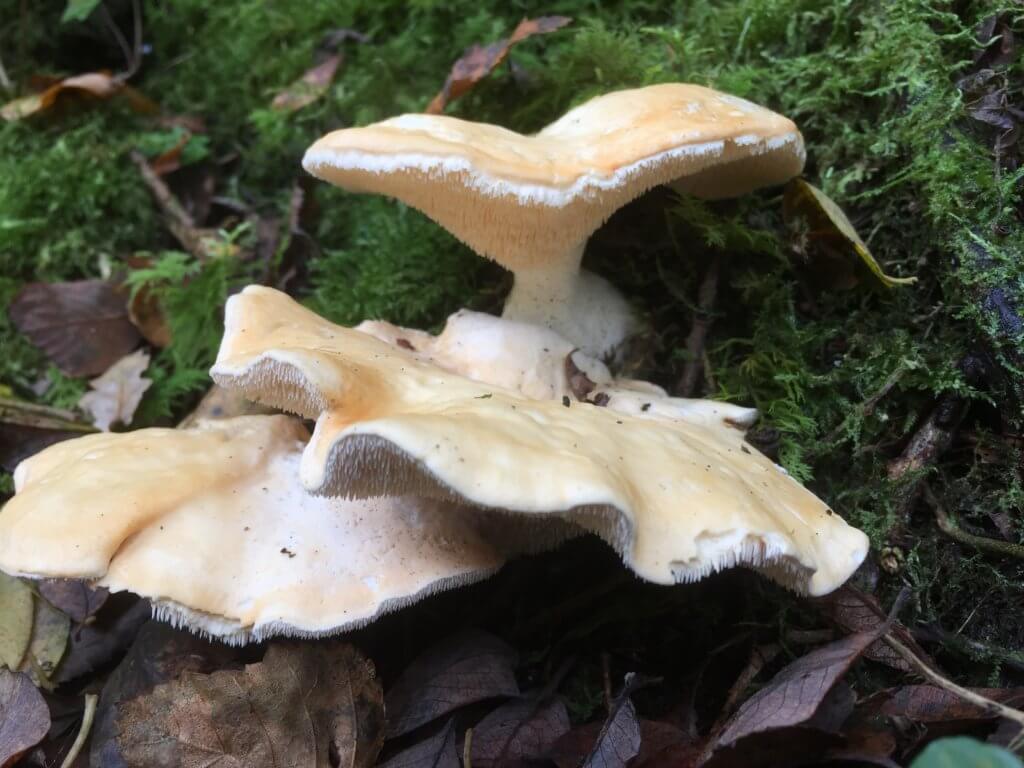
The feature that gives this fungus its name is both a godsend and a pain in the neck. The mass of spines on the underside, instead of the more usual gills or pores, make this otherwise rather nondescript species virtually impossible to confuse with anything else. So, if you are relatively new to foraging and wary of making mistakes, this is a good one to look out for. It is often found in deciduous woodland and can grow in the same places as the peerless Chanterelle, which is another good reason to keep an eye out for it.
Those spines though, once they have served their purpose in identification, do tend to cause problems. They are unbelievably brittle and splinter into hundreds of tiny pieces if you so much as look at them. They quickly litter your kitchen table and you’ll be finding them in unexpected places for days afterwards. I once tried to get around this by handling the caps with the utmost care until they were safely in the frying pan – which was a mistake. The spines survived the cooking process and turned an otherwise promising lunch into something akin to mouthfuls of dry gravel.
The best bet is to scrape the spines off in the woods as you gather them. It’s all a bit fiddly but once that’s done they taste very good indeed, though they do need to be well-cooked. They can often be found in large numbers, providing you with several days’ worth of mushrooms on toast in one picking.
According to John Wright’s unrivalled Mushrooms book in the River Cottage Handbook series, eating them may reduce chemicals in the body associated with tiredness. I’m not sure how good the evidence is for this but as a firm believer in the placebo effect it’s something that crosses my mind every time I eat them.
[registration_form]